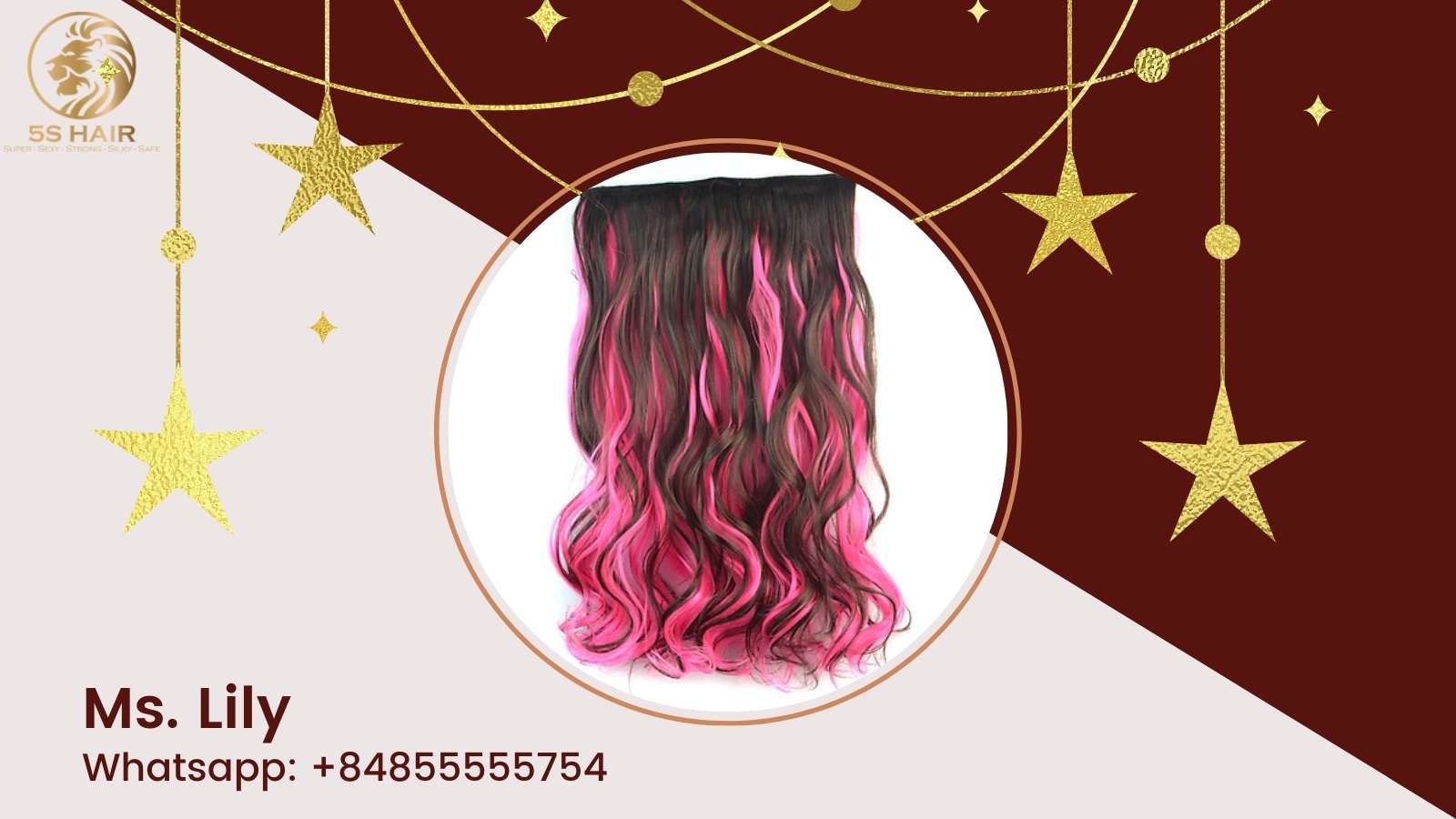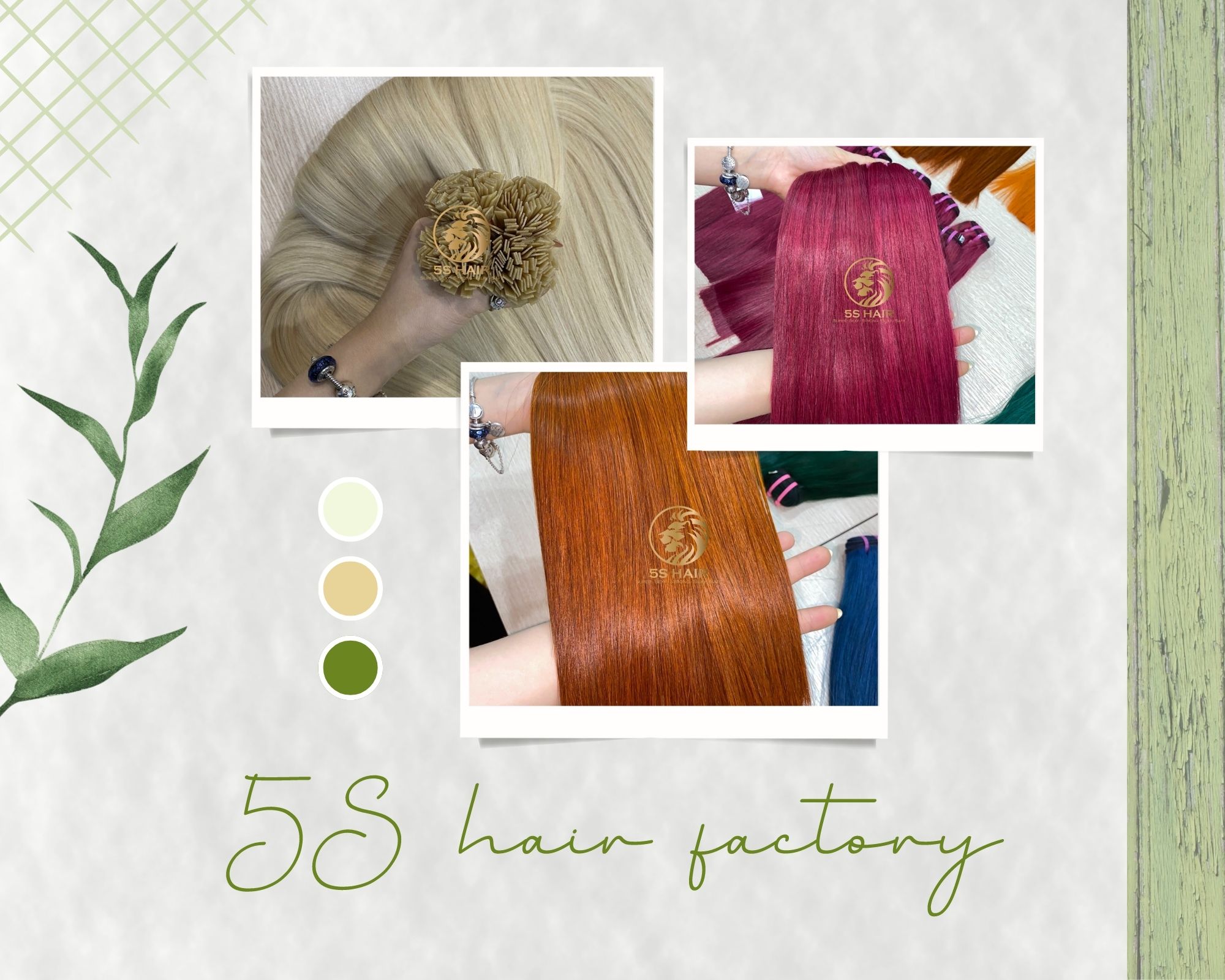Dyeing synthetic hair is a great way to change up your hairstyle without committing to a permanent color change. While it cannot be dyed with traditional hair dyes, there are several methods for dyeing synthetic hair that can be effective. In this article, we will explore the steps of how to dye synthetic hair and provide some tips for achieving the best results.

How to dye synthetic hair – comprehensive guide
How to dye synthetic hair – step-by-step
Dyeing a synthetic wig is an option if you want to change up your look but don’t want to commit to a drastic haircut, or if you’re playing a role that requires brightly colored hair. Here is a comprehensive guide on how to dye synthetic hair.
How to dye synthetic hair: Materials You Will Need
Before going through the detail of how to dye synthetic hair, this is what you need to prepare:
- A synthetic wig, weave, or extension
- Fabric dye or synthetic hair dye: Hair dye for human hair extensions should not be used as they may not work on artificial hair.
- Large plastic bowl or sink
- Rubber gloves
- Towel or cloth
- Hairbrush or comb
- Hair conditioner

How to dye synthetic hair: Materials You Will Need
How to dye synthetic hair: Choose the Right Dye
About how to dye synthetic hair, it’s important to choose a dye that is specifically formulated for synthetic hair. These dyes typically contain ingredients that help the color adhere to the synthetic fibers. Avoid using traditional hair dyes, as they won’t work on synthetic hair.
How to dye synthetic hair: Prepare the Dye
The next step of how to dye synthetic hair is making the dye. Follow the instructions on the dye package to prepare the dye solution. Mix the dye in a large plastic bowl or sink, making sure that the solution is evenly mixed.
- Alcohol-based ink: Alcohol-based ink and water should be combined in a spray container at a ratio of 1:1 and then shaken until thoroughly combined. If you need a lighter shade, simply dilute it further. This concentration produces an opaque shade very close to the ink shade.
- Sharp ink: About how to dye synthetic hair, simply unscrew the marker cap and squeeze out some ink. Be sure to store it in a spray bottle and dilute it with water. If you leave the ink in the jar overnight, it will produce a watery pigment that can be used the next day.
- Acrylic color: Make a spray bottle by mixing one-fourth of the acrylic color with three teaspoons of rubbing alcohol. To ensure a smooth mixture, shake the spray bottle well before use.

How to dye synthetic hair: Prepare the Dye
Synthetic hair is hair extensions that can be dyed with various artistic methods. Both approaches have their merits and drawbacks. For a head start on the coloring procedure, consider trying out some of the suggestions up there to start the journey of how to dye synthetic hair.
How to dye synthetic hair: Brush the Hair
Before dyeing the hair, brush it thoroughly to remove any tangles or knots. This will ensure that the dye is applied evenly to all parts of the hair.
How to dye synthetic hair: Apply the Dye
No matter what type of dye you choose, this step of how to dye synthetic hair will not change. Put on rubber gloves to protect your hands from the dye to start.
- Apply the color using a spray bottle, covering all of the hair and allowing it to soak in. Apply the dye by carefully working your fingers through small sections of hair, and then combing it out with a wide-toothed comb.
- Or you can dip the hair into the dye solution, making sure that all parts of the hair are fully saturated. If you’re dyeing a wig, weave, or extension, you can also place it in the dye solution and gently swish it around to ensure that the dye is evenly distributed.

How to dye synthetic hair: Apply the Dye
How to dye synthetic hair: Rinse the Hair
Once the hair is fully saturated with the dye, rinse it thoroughly with cold water. In this step of how to dye synthetic hair, make sure to rinse until the water runs clear, indicating that all excess dye has been removed.
Check out how to wash a synthetic wig with fabric softener if you’re interested.
How to dye synthetic hair: Condition the Hair
After rinsing, apply a hair conditioner to the hair to help restore moisture and prevent damage. Let the conditioner sit for a few minutes, then rinse it with cold water.
How to dye synthetic hair: Dry the Hair
Gently pat the hair dry with a towel or cloth. Do not rub the hair vigorously, as this can cause tangling or damage to the synthetic fibers. Allow the hair to air dry completely before styling.
And this is how to dye synthetic hair! So simple, didn’t it?

How to dye synthetic hair: Dry the Hair
5S Hair Factory – the comprehensive guide on how to dye synthetic hair as well as human hair
Dyeing synthetic hair can be a fun and affordable way to change up your hairstyle, but there are some drawbacks to using synthetic hair extensions.
While synthetic hair can be dyed, the results are often unpredictable, and the color may not take evenly or last as long as it would on human hair. Instead of trying to figure out how to dye synthetic hair without knowing where the results will go, why not try it with real human hair?
- Human hair extensions look and feel more natural than synthetic hair, as they are made from real hair. They can be styled and treated just like your own hair, and they will blend seamlessly with your natural hair.
- With human hair extensions, you have a wider range of color options to choose from, as they can be dyed to match your natural hair color or to achieve a new look. You can also choose from different textures and lengths to achieve the perfect look.

5S Hair Factory – the comprehensive guide on how to dye synthetic hair as well as human hair
If you’re looking for high-quality hair extensions to dye, look no further than 5S Hair Factory with high-quality Vietnamese hair. We offer a wide range of human hair extensions that are perfect for coloring and styling to achieve the look you desire.
In conclusion, dyeing synthetic hair is a great way to change up your hairstyle without damaging your natural hair. With the right materials and some patience, you can achieve beautiful, vibrant colors on your synthetic hair. Follow these steps and tips on how to dye synthetic hair to ensure that your dyeing process is successful and your hair looks amazing. Please contact Ms. Lily – an expert of 5S Hair Factory for answers via WhatsApp number: (+84) 855 555 754 for advice.



